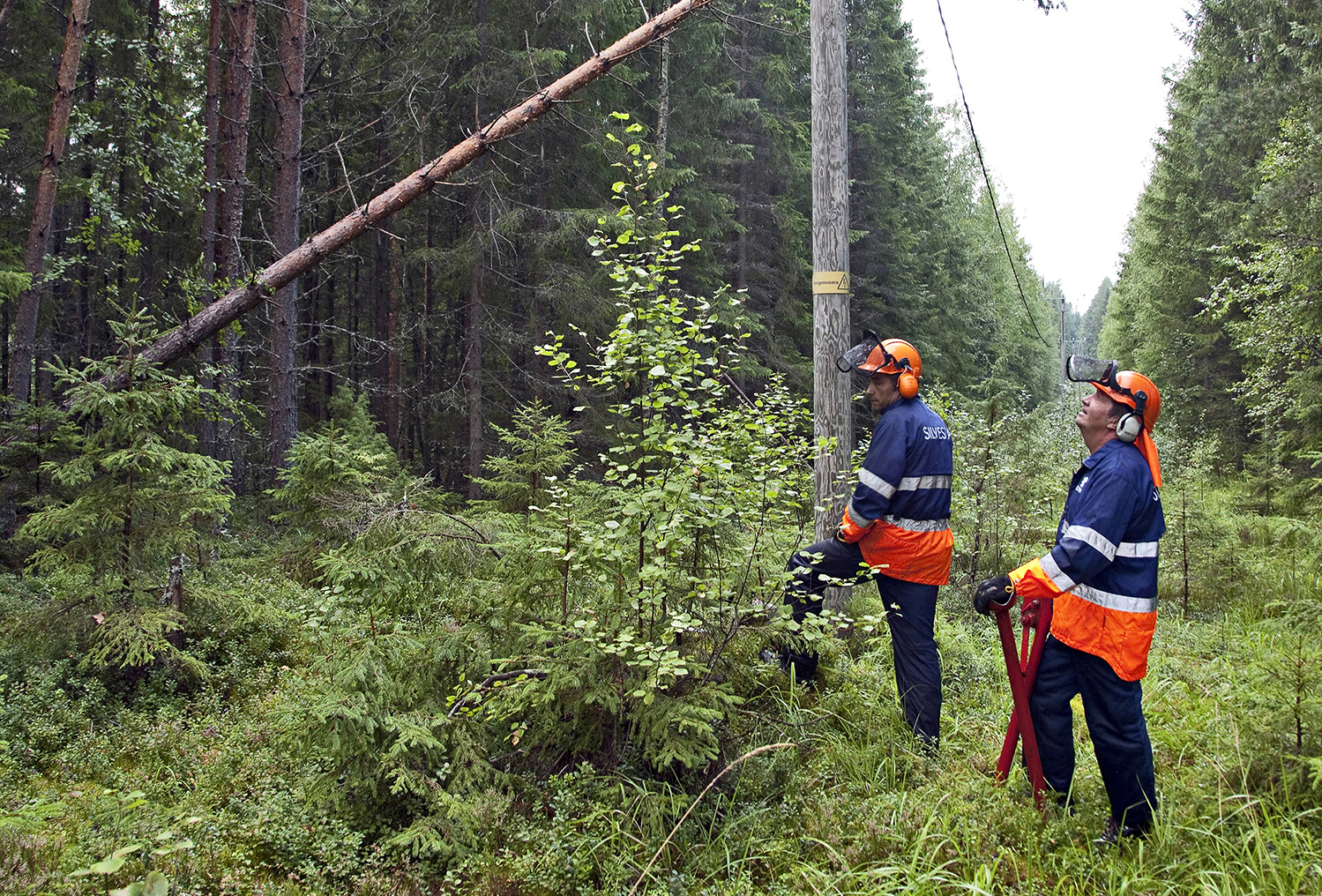The Finnish Meteorological Institute and Fingrid collaborate in a diverse manner. Fingrid particularly needs observation and forecast information about the wind, lightning, crown snow load and frost.
“Storm winds are a climate threat to the main grid even though they rarely cause disturbances. Fingrid raises its preparedness whenever storm winds continuously exceed 20 m/s in a land area. Proactive work also begins when the crown snow load accumulates on a transmission line structure. We start patrolling on the ground and in the air to monitor transmission lines and dislodge any crown snow load that has built up on the structure,” says Fingrid’s Control Room Manager Arto Pahkin.
Tree-proof transmission lines are one way of preparing for crown snow load and ice loads in advance.
“We clear the main grid right-of-way every eight years, and there is also a ten-metre border zone on both sides where the trees cannot be too high. This means that falling trees don’t land on electricity lines and interfere with grid operations. Along with storm winds and crown snow load, lightning causes problems and we use a lightning radar system to monitor the movements of thunderstorms,” explains Pahkin.
Fingrid always has access to up-to-date weather information provided by the Finnish Meteorological Institute via the Ilmanet service. The Meteorological Institute also produces a weekly weather review presented by a meteorologist in the Krivat system, which provides the opportunity to ask more detailed questions about the weather situation. The Meteorological Institute communicates about issues affecting critical infrastructure by means of Luova bulletins, a system that takes its Finnish name from preparation for natural hazards.
“The meteorologist compiles a Luova bulletin when a weather situation is expected to have significant effects on, for example, electricity distribution. A Luova bulletin contains a forecast of the strength, movement and area affected by the weather phenomenon. It also assesses the impact of the phenomenon and is updated when necessary. A second preparedness product called Luova monitoring is drawn up on a daily basis. This forecasts the probability of weather phenomena that will be hazardous to society and covers a period of approximately one week,” says Marja Aarnio-Frisk, Head of Group at the Finnish Meteorological Institute.
The timing of a reliable forecast depends on the phenomenon
Temperature can be reliably forecast about 7 days in advance, the routes of precipitation fronts 3–5 days in advance, low pressure and winds 2–3 days in advance, and thunderstorms and amounts of precipitation 0–2 days in advance.
“Tornadoes, downbursts and major thunderstorms are especially difficult to forecast and locate in advance,” states Aarnio-Frisk.
During the winter, it’s hard to forecast whether rain is freezing and how much snow will accumulate.
“We’ve cooperated with the Finnish Meteorological Institute to, for example, improve our ability to forecast and locate crown snow loads accumulating on the lines. We have also researched the effects of freezing rain on electricity lines,” says Pahkin.
Increases in readiness are always planned
An increase in readiness is associated with a forecast or event that makes it necessary to reserve company or service provider employees to manage disturbances or repair faults. Examples of such events include the threat of a serious disturbance in the main grid, loss of part of the operation control system or some ICT connections, or a forecast of a significant climate threat.
“If necessary, we establish a crisis centre in conjunction with the control room to efficiently handle external and internal communications regarding the disturbance. Properly timed communication with stakeholders, the authorities and media is important,” explains Pahkin.
The Electricity Market Act requires grid companies to draw up a preparedness plan. Fingrid’s preparedness plan brings together Fingrid’s guidelines concerning preparedness and disturbance management and information about preparedness. The preparedness plan contains a readiness section that provides regulations for Fingrid’s actions in extreme conditions.
“The plan forecasts threats and minimises disturbances,” assures Pahkin.






